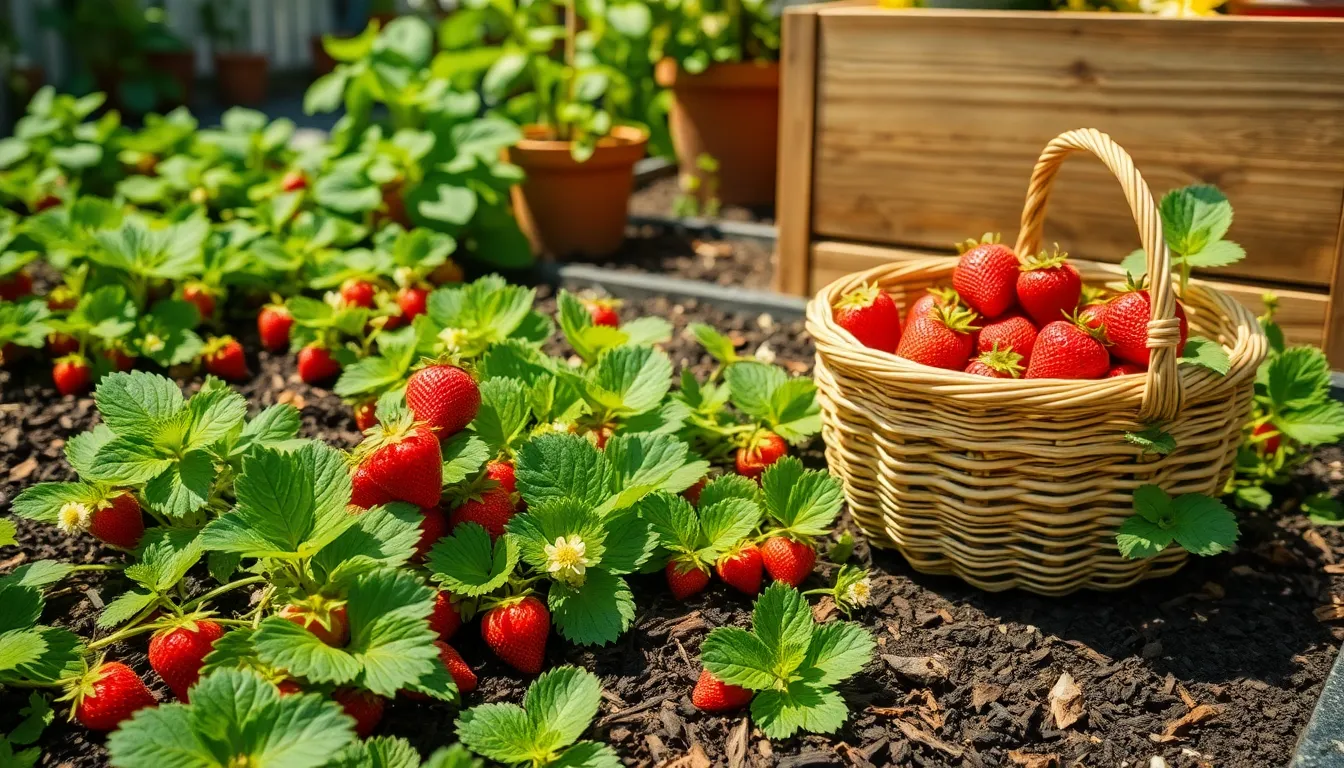Imagine stepping into your garden on a sun-drenched morning and plucking ripe, juicy strawberries straight from the vine. Growing strawberries at home is not only a delightful addition to your garden, but it also offers a bounty of sweet rewards that both your taste buds and your health will appreciate. Whether you’re a beginner just digging into the rich world of gardening or a seasoned green thumb looking to expand your horticultural horizons, cultivating strawberries can be a fulfilling and fruitful endeavor.
For those just starting out, strawberries are one of the most forgiving fruits, making them ideal for new gardeners eager to see quick, delicious results. Experienced gardeners will appreciate the variety of strawberry plants available, each with its unique flavor profile and growth habit, offering a new layer of complexity to their gardening expertise. In this article, we’ll explore the benefits of growing strawberries, including how they can enhance your garden’s biodiversity and provide fresh produce right at your fingertips. From selecting the right varieties to mastering care techniques, you’ll gain the knowledge and confidence needed to cultivate your own patch of these delightful berries.
Embarking on your strawberry-growing journey is not only about enjoying their luscious taste but also about engaging in a sustainable practice that connects you to the natural world. With practical tips, expert insights, and encouragement, this guide will navigate you through the essentials of planting, nurturing, and harvesting strawberries. By the end, you’ll not only understand why strawberries deserve a spot in your garden, but you’ll also be equipped to make it happen. So, roll up your sleeves, and let’s dig into the sweet art of strawberry cultivation together.
Benefits of Homegrown Strawberries
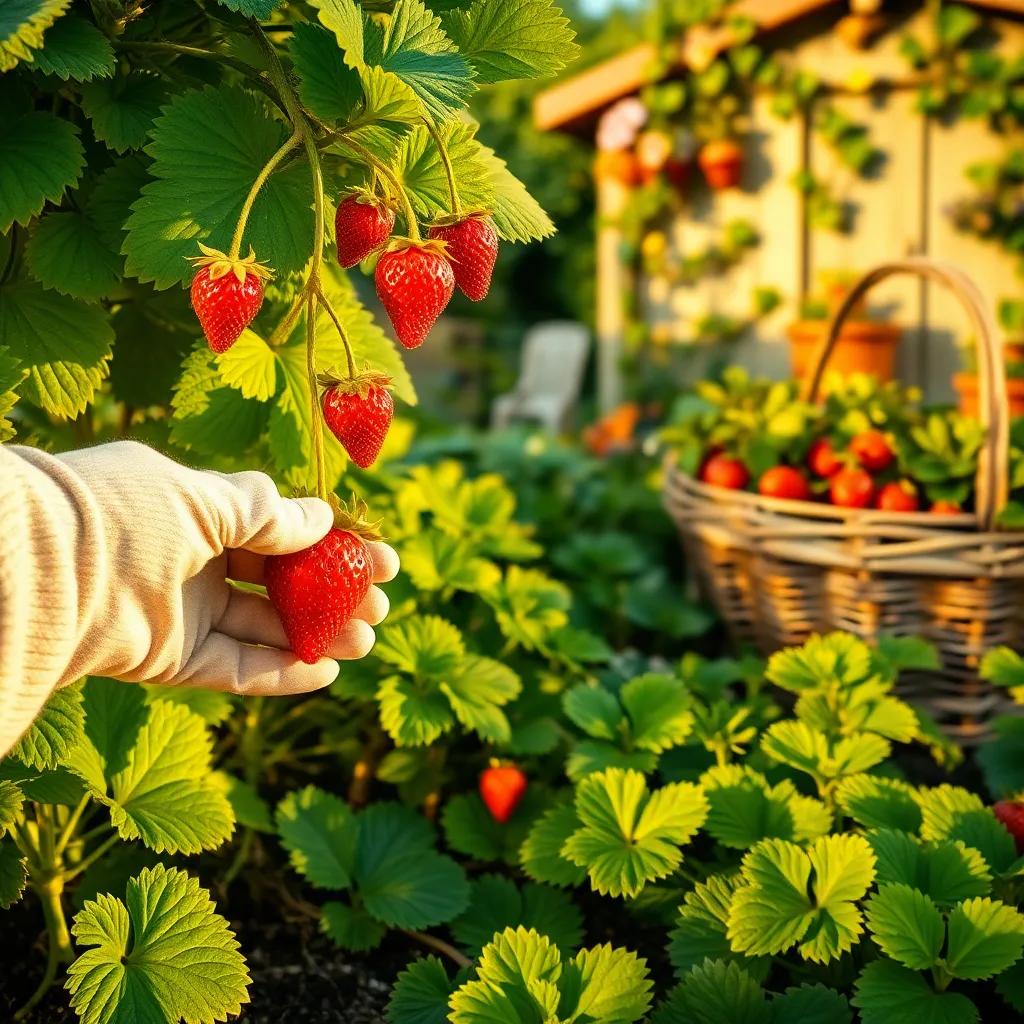
Homegrown strawberries offer unparalleled freshness and flavor that store-bought berries can’t match. When you grow your own, you enjoy the satisfaction of picking ripe, juicy fruits directly from the plant, knowing they are free from harmful pesticides.
For beginners, strawberries are a great plant to start with, as they can thrive in a variety of conditions. They prefer well-drained soil rich in organic matter, making a mix of garden soil and compost an ideal choice.
Experienced gardeners can experiment with different varieties to extend the harvesting season. By planting a mix of June-bearing, everbearing, and day-neutral strawberries, you can enjoy a continuous supply of fresh berries throughout the summer.
Regular watering is crucial, especially during flowering and fruiting stages, to ensure plump and juicy strawberries. Aim to keep the soil consistently moist but not waterlogged, and consider using a mulch to retain moisture and reduce weed competition.
Simple Steps to Start Growing
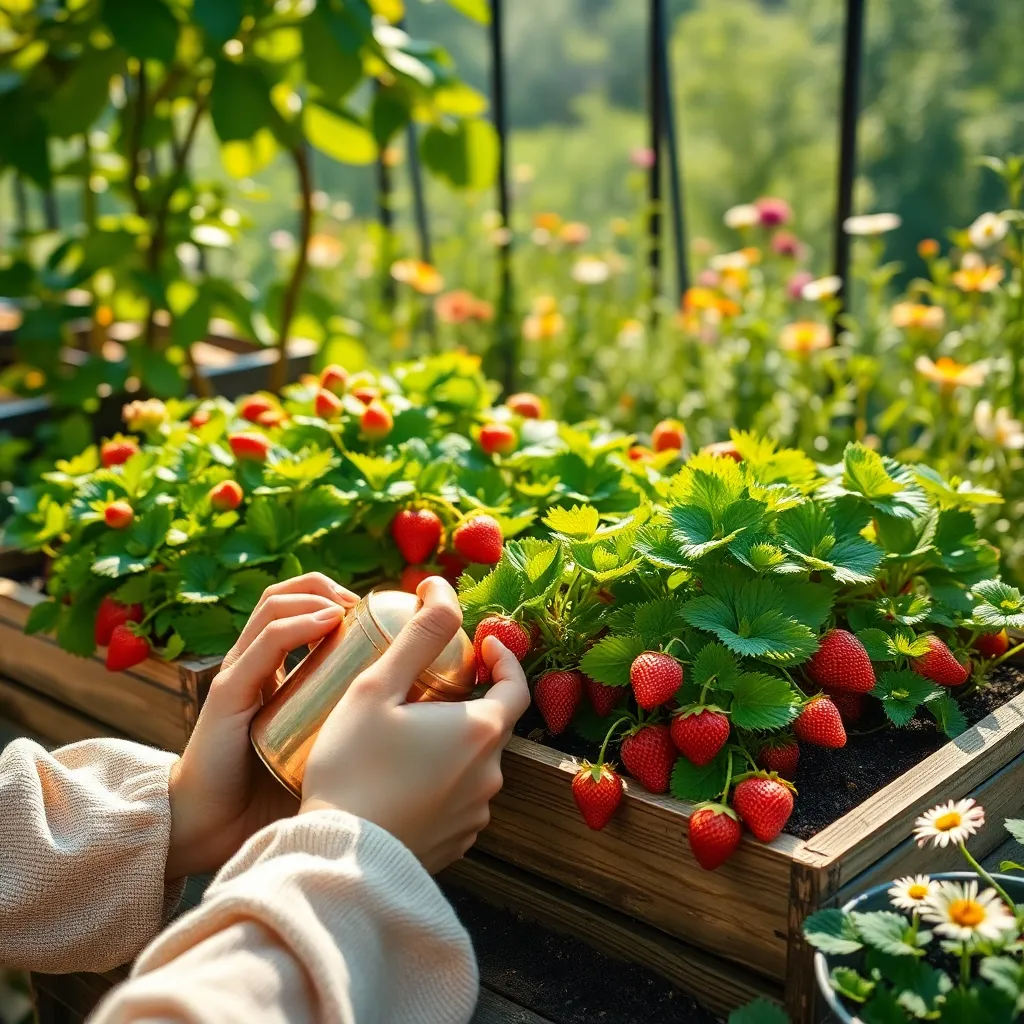
To begin growing strawberries at home, you first need to choose the right variety for your garden. June-bearing, everbearing, and day-neutral are the three main types, each with its own fruiting season and yield patterns.
Once you’ve selected a variety, it’s essential to prepare the soil properly. Strawberries thrive in well-drained, slightly acidic soil, so strive for a pH between 5.5 and 6.8 using a soil test kit.
Plant your strawberries in a sunny location, as they require at least six to eight hours of direct sunlight daily. Space the plants about 18 inches apart in rows to ensure good air circulation and reduce the risk of disease.
Water your strawberry plants regularly, especially during dry spells, but be careful not to overwater. Aim for an inch of water per week, either from rainfall or supplemental watering, to keep the soil consistently moist but not soggy.
For those looking to maximize growth, consider mulching with straw or pine needles. This helps retain soil moisture, suppress weeds, and keep the fruit clean.
Ideal Conditions for Strawberry Growth
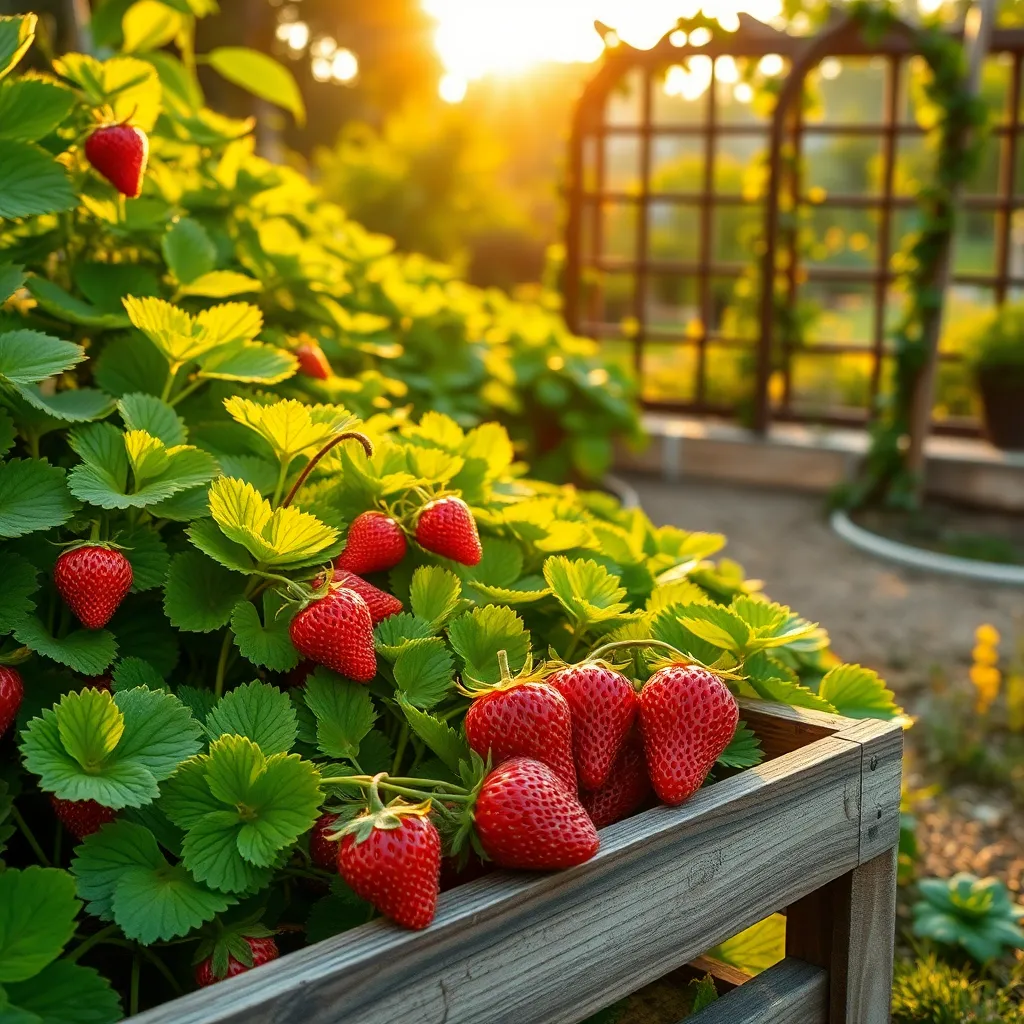
Strawberries thrive best in locations with full sunlight, requiring at least six to eight hours of direct sun per day. Choose a planting site that is well-drained and rich in organic matter to ensure optimal growth.
To prepare the soil, incorporate well-rotted compost or aged manure to improve fertility and drainage. A slightly acidic soil with a pH between 5.5 and 6.8 is ideal for strawberries, as it allows them to absorb nutrients effectively.
Watering is crucial for strawberry plants, especially during dry spells. Aim to keep the soil consistently moist but not waterlogged, providing about 1 inch of water per week, either from rainfall or irrigation.
For those looking to maximize fruit production, consider using a mulch of straw or pine needles around the plants. This not only helps retain moisture but also reduces weed competition and keeps fruits clean and disease-free.
Maintaining Healthy Strawberry Plants

To keep your strawberry plants thriving, it’s essential to water them consistently but not excessively. Aim to provide about one inch of water per week, preferably in the morning to allow foliage to dry and prevent disease.
Mulching is an effective way to maintain soil moisture and temperature. Use organic mulch like straw or pine needles, applying a layer two to three inches thick around the plants.
Regular feeding is crucial for robust strawberry plants. Use a balanced, slow-release fertilizer in early spring and again after the first harvest to promote continuous growth.
Pruning is another key aspect of maintaining healthy plants. Trim back runners to concentrate the plant’s energy on fruit production and remove any dead or diseased leaves promptly.
For experienced gardeners looking to maximize yield, consider implementing a crop rotation strategy. Rotating strawberries with legumes or leafy greens every four years can help prevent soil-borne diseases and replenish soil nutrients.
Harvesting and Enjoying Your Bounty
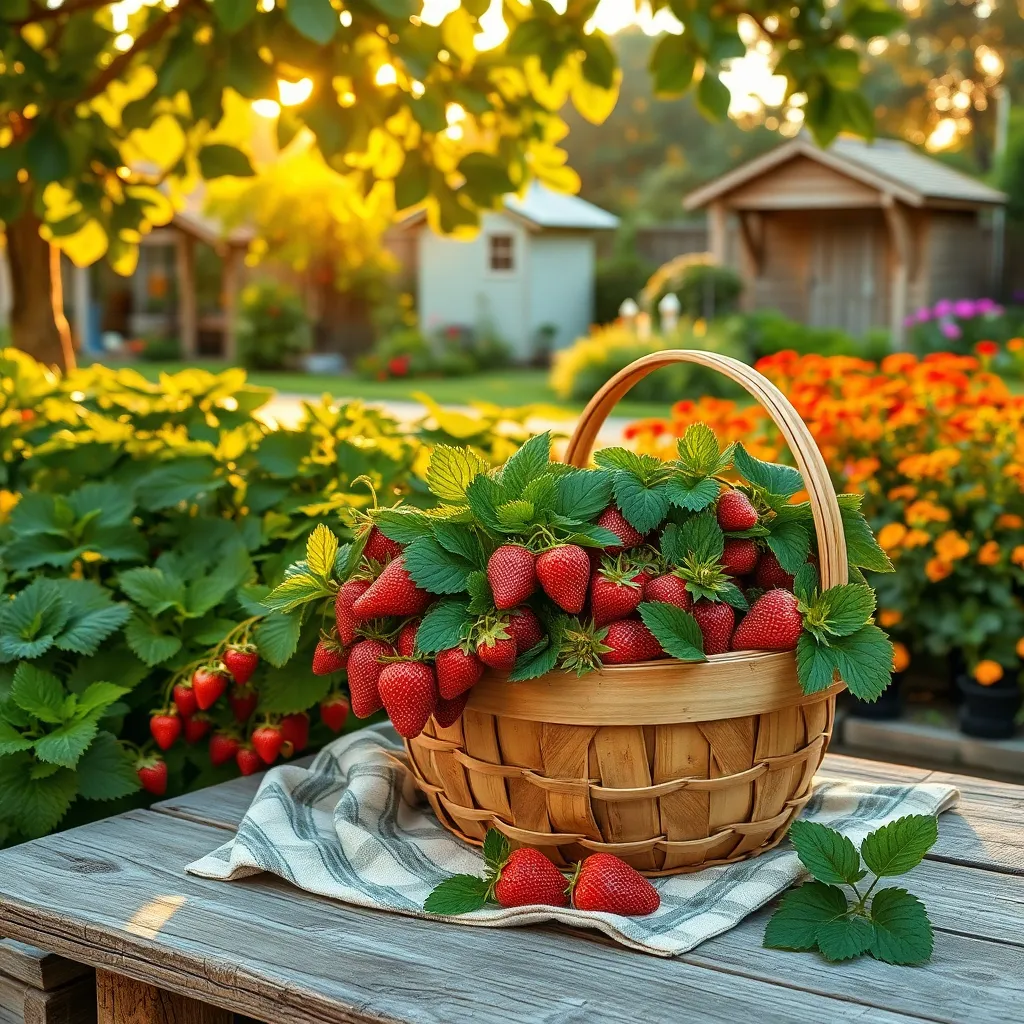
Once your strawberry plants have produced ripe fruit, it’s time to enjoy the delicious rewards of your labor. Strawberries should be picked when they are fully red for the best flavor, so check your plants daily during the peak season.
Gently grasp the berry and twist it off the stem to avoid damaging the plant. It’s important to handle the berries carefully to prevent bruising, which can lead to quicker spoilage.
After harvesting, immediately refrigerate your strawberries if you don’t plan to use them right away. This preserves their freshness and extends their shelf life, allowing you to enjoy them over several days.
For those who have a surplus of strawberries, consider freezing them for later use. Wash, hull, and freeze them on a baking sheet first, then transfer to a bag or container for long-term storage.
Incorporate your homegrown strawberries into a variety of dishes to fully appreciate their flavor. From smoothies and salads to desserts like shortcakes, the possibilities are endless, and your taste buds will thank you.
Conclusion: Growing Success with These Plants
In nurturing relationships, the simple act of growing strawberries at home can unfold profound insights. Firstly, it teaches patience, reminding us that relationships, like strawberries, require time to flourish. Secondly, it emphasizes the importance of consistent care and attention, akin to watering your plants. Thirdly, the process of growth highlights teamwork, as thriving relationships often involve shared responsibilities. Fourthly, it mirrors the joy of reaping rewards, celebrating the sweet moments together. Lastly, just as each strawberry is unique, so too is every relationship, encouraging appreciation for individuality.
To immediately enrich your relationship, consider starting a small strawberry patch with your partner or loved ones. This shared project can foster communication, collaboration, and mutual understanding. As you embark on this journey, save or bookmark this article as a handy guide to revisit these valuable insights.
Remember, relationship success is a continuous journey of growth and discovery. By integrating these lessons into daily life, you set the stage for a deeper, more fulfilling connection. Empower yourself to nurture and cherish your relationships, and let this article be your companion in cultivating a love that thrives.

